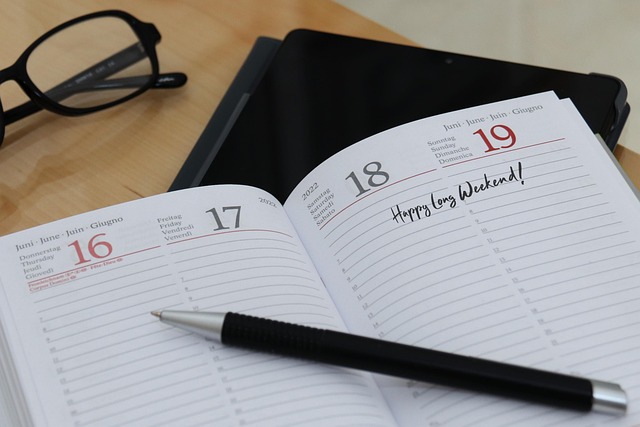Task Planner: Methods for Better Organization and Productivity
A task planner is a practical system that helps translate intentions into completed actions. Whether you jot items in a notebook or use an app, a planner brings structure to a busy schedule, reduces cognitive load, and makes progress visible. This article explains how a task planner supports organization, increases productivity, and how to choose between digital planner and physical planner approaches.

What is a task planner?
A task planner is any tool or routine used to capture, prioritize, schedule, and review tasks. It can be as simple as a daily checklist or as structured as a multi-project Kanban board. The core functions are consistent: collect tasks, decide what to do next, assign time or context, and review outcomes. Using a task planner prevents tasks from being forgotten, creates accountability through visibility, and helps allocate mental energy to higher-value work rather than scrambling to remember details.
A practical task planner aligns with personal rhythms. For example, some people plan weekly to set priorities and then use a daily list to execute. Others prefer time-blocking directly inside the planner. The important part is regular review: without it, a list becomes a digital or paper graveyard rather than a productivity tool.
How does organization improve outcomes?
Organization in the context of a task planner means clear categorization, consistent naming, and a reliable review cadence. Well-organized task lists reduce decision fatigue because you spend less mental effort choosing what to work on next. Prioritization methods like Eisenhower matrices or simple ABC coding translate vague intentions into concrete next steps and help prevent urgent-but-unimportant items from dominating your time.
Good organization also supports collaboration. When shared lists or project boards use consistent tags and timelines, teammates can estimate work and coordinate dependencies more easily. Over time, the discipline of organizing tasks builds a clearer picture of capacities and bottlenecks, enabling better planning and fewer last-minute crises.
How can a task planner boost productivity?
A task planner boosts productivity by converting goals into repeatable workflows. Breaking larger goals into defined tasks makes progress measurable and reduces procrastination. Techniques such as time-boxing, batching similar tasks, and setting minimal viable steps (the smallest actionable next step) are easier to apply when tasks are recorded and visible.
Beyond task capture, a planner supports reflection. Regular end-of-day or weekly reviews allow you to spot patterns—tasks that take longer than expected, recurring distractions, or tasks that consistently get postponed. That insight leads to adjustments in scheduling, delegation, or scope, which incrementally improves productivity. The planner becomes both an execution tool and a learning record.
Choosing a digital planner
A digital planner refers to apps or software for tracking tasks: to-do list apps, project management tools, calendar-integrated systems, or specialized digital planners that mimic paper layouts. Advantages include search, reminders, recurring tasks, integrations with email or calendar, and easy sharing with others. Digital planners excel when you need automatic syncing across devices or collaboration across teams.
When evaluating a digital planner, consider interoperability (export/import options), notification control to avoid constant interruptions, and the ability to structure views (list, board, calendar). Privacy and data portability are also important: choose tools that allow you to extract your data if you switch systems. A successful digital planner setup balances automation with intentional boundaries so notifications support rather than disrupt focus.
Choosing a physical planner
A physical planner is a paper-based notebook, agenda, or printed planner that you fill by hand. Many users prefer physical planners for their tactile nature, reduced screen time, and the cognitive benefits of handwriting. Physical planners are flexible: you can design daily layouts, habit trackers, and project notes without preset software constraints.
To get the most from a physical planner, pair it with brief digital backups for critical dates or shared responsibilities, or schedule a short daily review to transfer actions into digital calendars when needed. Physical planners are well suited to people who benefit from low-tech rituals, who like bullet journaling, or who use planning as a reflective practice rather than purely task execution.
Finding balance between digital planner and physical planner
A hybrid approach often works well: use a digital planner for calendar events and shared tasks, and a physical planner for daily focus, notes, or brainstorming. The key is clear boundaries—decide which system holds the authoritative list for different types of items (e.g., meetings in digital, personal habits in paper). Syncing these boundaries in a short, regular review prevents duplication and keeps both systems useful.
Experiment for a few weeks with each setup to assess what reduces friction and increases completion rates. Adjust the cadence of reviews and the level of detail in each system until the workflow feels sustainable rather than adding extra work.
Conclusion
A task planner, whether digital or physical, is a method for converting goals into consistent action. Clear organization and regular review make planners effective tools for improving productivity and reducing stress. Choosing between a digital planner and a physical planner — or combining them — depends on your need for portability, collaboration, and the cognitive benefits of handwriting. With a clear routine and realistic expectations, a task planner becomes an indispensable part of daily work and long-term planning.





